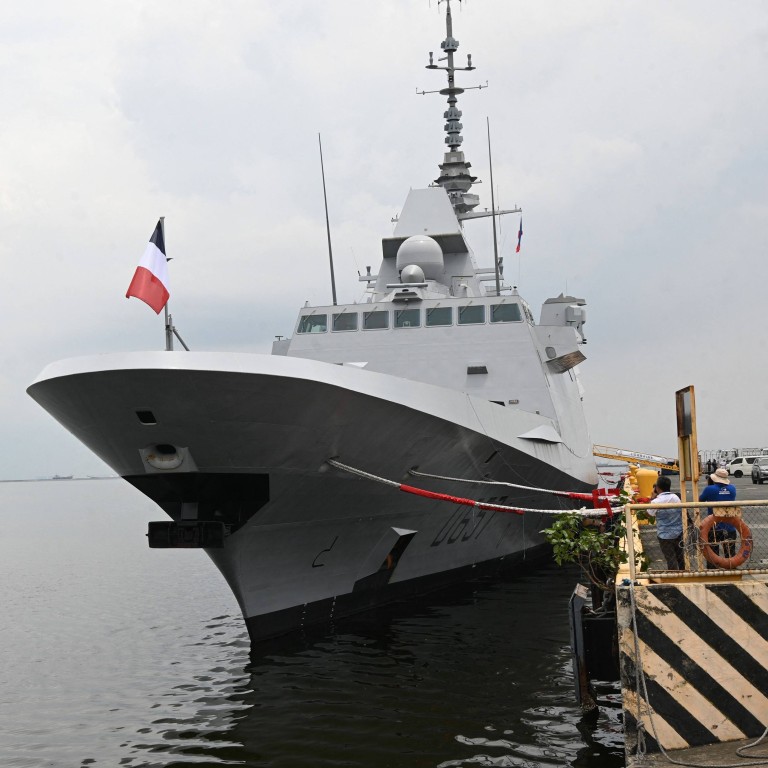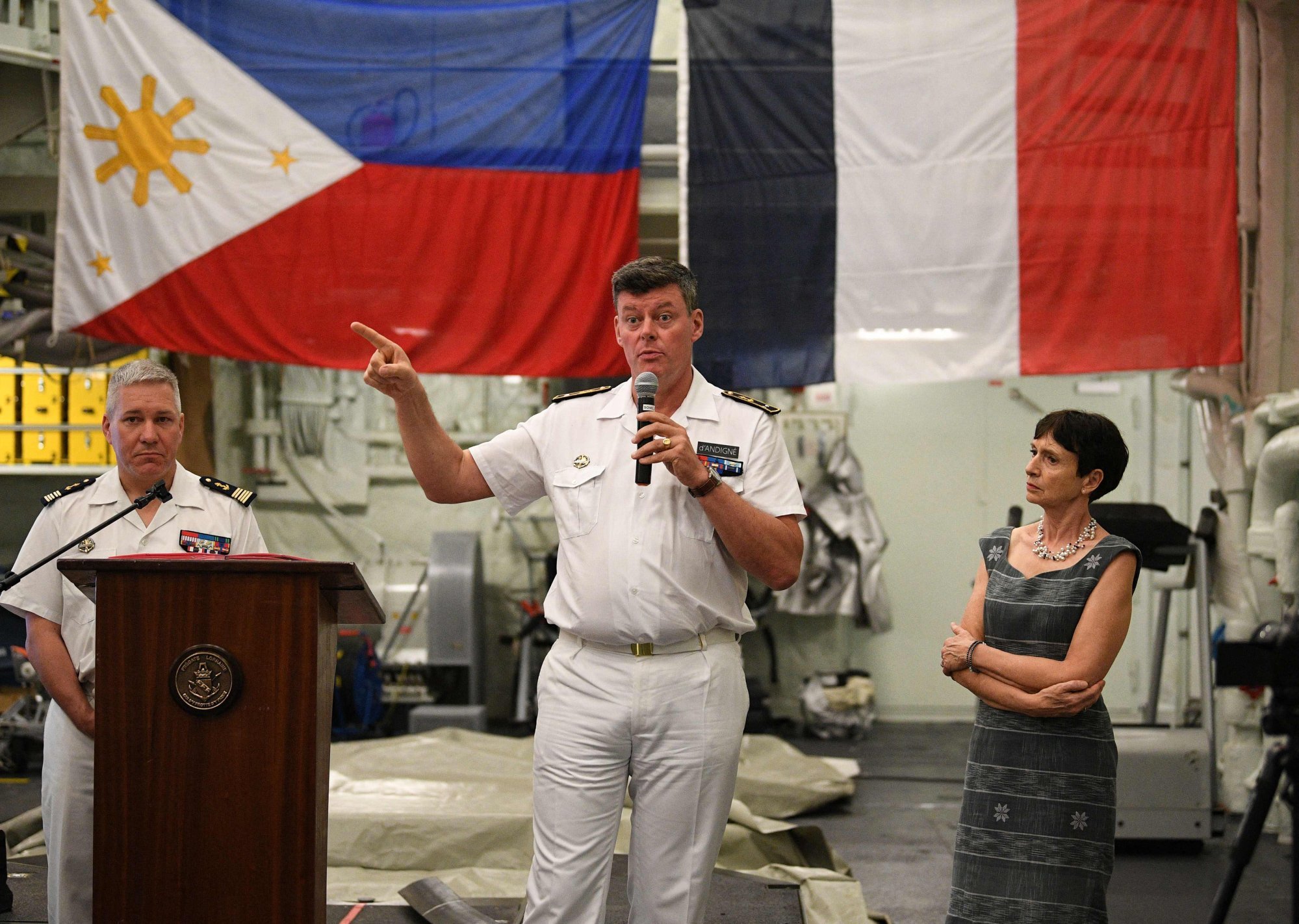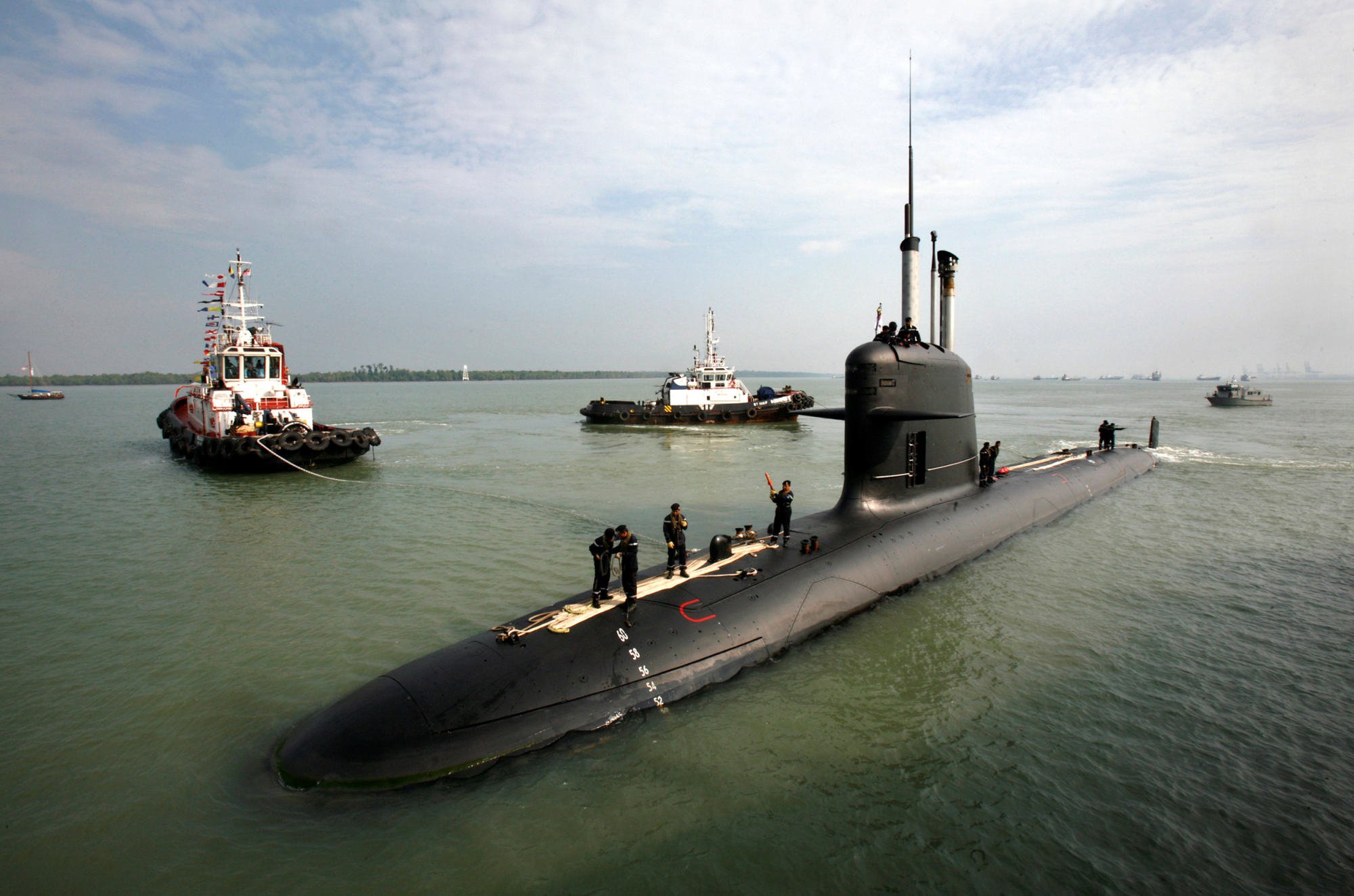
France’s Indo-Pacific foray is going full steam ahead
- Extended military deployments in Asia and the pursuit of arms deals with several regional countries are demonstrating France’s desire to play a greater role in the Indo-Pacific
- This could work to the Philippines’ benefit as it tries to launch its long-delayed submarine programme
Last week, the French navy’s Aquitaine-class destroyer Lorraine made a port call in the Philippines after departing Japan. The itinerary is part of the ship’s long-duration deployment to the region. The port call coincided with the visit of Rear Admiral Geoffroy d’Andigné, joint commander of the French armed forces in the Asia-Pacific, to Manila where he met senior foreign affairs, defence and military officials.
Another French naval vessel, the Floreal-class frigate Prairial, conducted a passing exercise in the South China Sea with Philippine coast guard multi-role response vessel BRP Capones in March. The Prairial also passed through the Taiwan Strait in April. Elsewhere in the Indo-Pacific, the third iteration of Exercise La Perouse off the Bay of Bengal saw French ships manoeuvring with their American, Australian, British, Indian and Japanese counterparts in March.
In late April and early May, Exercise Croix du Sud took place in the French overseas territory of New Caledonia in the South Pacific for the first time in five years. One of the largest regular humanitarian help and disaster relief manoeuvres in the region, this year’s round involved 19 countries, including France, Australia, the United States, United Kingdom, New Zealand, Fiji and Tonga.

The momentum at sea is matched by action in the air. France has dispatched 19 aircraft to take part in various Indo-Pacific exercises as part of its Pégase 2023 mission. With a stopover at a French base in the United Arab Emirates, the aircraft travelled more than 11,000 kilometres (6,835 miles) in 30 hours before arriving in Singapore and Malaysia.
Why France is flexing its muscles in the South China Sea
Last year, Indonesia also ordered 42 new Rafale fighter jets, the first of which will arrive in 2026. To bridge the gap between now and the full delivery, Jakarta procured 12 Mirage 2000-5 aircraft from Qatar. India also received the last of its batch of 36 Rafales last year. France can be an option for countries moving away from heavily sanctioned Russian arms but with concerns about costlier American platforms.

The submarine programme with the Philippines will be big. The Philippines’ lack of subsurface capability makes it an outlier in the first island chain. This is a great irony for a maritime and archipelagic nation, but the country’s bid to sign a submarine contract was torpedoed by the Covid-19 pandemic. As Manila’s economy recovers, France is reviving its bid under the new Marcos administration.
Past deals provide moorings for this game-changing acquisition. France delivered fast patrol boats and an offshore patrol vessel to the Philippine Coast Guard in 2018 and 2019. In 2021, France joined the bilateral Philippine-US maritime exercise Sama-Sama for the first time. Last month, French President Emmanuel Macron reiterated his invitation to Philippine President Ferdinand Marcos Jnr to make a state visit to Paris. Whether the visit can seal the deal or not, France’s Indo-Pacific foray is going full steam ahead.
Lucio Blanco Pitlo III is a Taiwan Fellow and a visiting scholar at National Chengchi University’s Department of Diplomacy and Centre for Foreign Policy Studies

